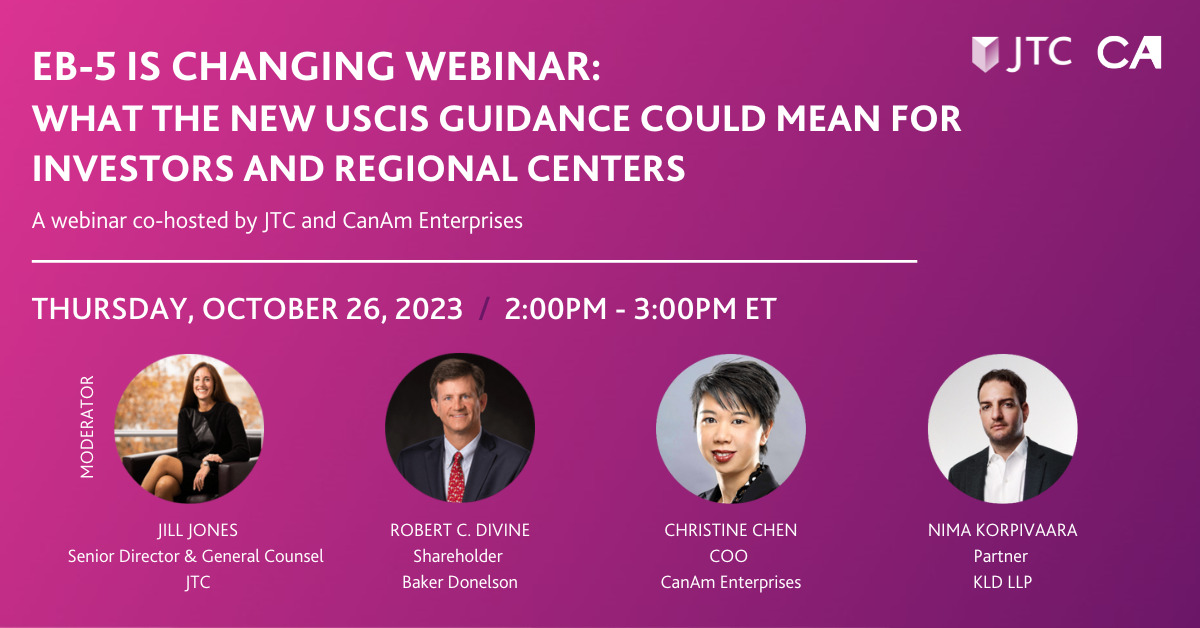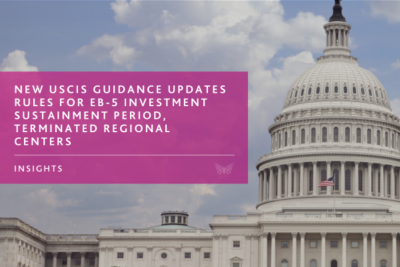Essential Information for Prospective Investors
Understanding the EB-5 Investment Process
The EB-5 Immigrant Investor Program has garnered significant interest, particularly in the last two years following the enactment of the Reform and Integrity Act. With this renewed interest comes a myriad of questions from prospective investors.
Recently, Nick Buonagurio, Senior Vice President of Business Development for CanAm Enterprises, sat down with Rakesh Patel, Managing Partner of Patel Law Group, to discuss Common Questions from EB-5 Investors. You can watch their full conversation here.
The Growing Interest in EB-5 Investments
The EB-5 program has seen a resurgence in interest due to its reauthorization under the Reform and Integrity Act. This reauthorization has provided clearer guidelines and increased transparency, which has, in turn, boosted investor confidence. However, with this increased interest comes the need for potential investors to thoroughly understand the intricacies of the program, from the duration of investment to the specifics of the immigration process.
Understanding the Investment Timeline
One of the most common questions posed by new EB-5 investors concerns the length of time their funds will be tied up. The new regulations under the Reform and Integrity Act provide more clarity, indicating that funds must be at risk for a minimum of two years. However, in practice, this period can extend significantly depending on the nature of the project. For instance, large-scale construction projects often take longer than two years to complete, and the funds may remain invested for up to five or six years.
The investment timeline also depends on the project’s structure. In most cases, the funds are used as loans to developers, with terms ranging from four to six years. It is essential that investors understand the realistic timeline of their investment, which can differ from the minimum period set by immigration authorities.
The Immigration Process: What to Expect
The EB-5 program’s primary appeal lies in its ability to provide permanent residency for investors and their families. However, the immigration process can be lengthy, often taking six to seven years from start to finish. The process begins with the issuance of a conditional green card, which typically takes about two years. For investors already in the United States, obtaining work and travel authorization can take three to four months, with full processing times extending further.
Timelines have become somewhat more predictable with the introduction of concurrent filing, which allows investors to file for their immigrant petition and adjustment of status simultaneously. This change has been particularly beneficial for those already in the U.S., enabling them to work and travel while their application is processed.
Financing an EB-5 Investment: The Role of Loans
While the use of secured loans (such as those backed by real estate) has long been accepted, unsecured loans are becoming increasingly common. For a loan to be acceptable under EB-5 regulations, it must be a “good faith” loan, meaning it should reflect genuine financial arrangements, such as regular payments and realistic terms.
However, while loans can be a viable option for financing an EB-5 investment, they require careful structuring. Both attorneys and regional centers must ensure that the loan arrangements meet all regulatory requirements to avoid jeopardizing the investor’s immigration prospects.
Understanding Rates of Return
When it comes to EB-5 investments, many prospective investors are curious about the potential financial returns. It’s important to remember that the primary goal of an EB-5 investment should be obtaining permanent residency, not generating high financial returns. In fact, most EB-5 investments offer very modest returns, typically in the range of 0.25% to 0.5% per year. These low returns reflect the fact that EB-5 investments are primarily vehicles for securing a green card, rather than traditional financial investments.
While some investors may seek higher returns through equity investments, these often come with greater risks. Ultimately, the decision comes down to the investor’s risk tolerance and primary objectives—whether they prioritize obtaining a green card or are also seeking financial gains.
The Importance of Priority Processing and Set-Asides
A significant advantage of the recent EB-5 reforms is the introduction of set-asides for investments in rural and high-unemployment areas. These set-asides not only increase the number of available visas but also offer priority processing for certain projects. In particular, rural projects benefit from faster processing times, with some applications being approved in as little as 10 months.
This prioritization is crucial for investors from countries with high demand for EB-5 visas, such as China and India. By investing in set-aside projects, these investors can potentially expedite their path to permanent residency.
Navigating Source of Funds Requirements
One of the most challenging aspects of the EB-5 process is proving the lawful source of the investment funds. USCIS requires a detailed account of how the funds were obtained, including supporting documentation for every step of the financial journey. This process often involves tracing the funds back through multiple transactions, sometimes over several years.
Given the complexity of these requirements, investors are advised to work closely with experienced attorneys who can help them compile a thorough and compelling source of funds documentation. This step is critical to ensuring the success of the EB-5 application.
Conclusion
The EB-5 Immigrant Investor Program offers a unique opportunity for foreign nationals to obtain U.S. permanent residency, but it requires careful planning, thorough understanding, and adherence to complex regulations. Potential EB-5 investors must understand the EB-5 Investment Process and be prepared to navigate various legal, financial, and procedural challenges. By working with experienced professionals and staying informed about the latest developments in the EB-5 program, investors can maximize their chances of achieving their immigration and financial goals.




